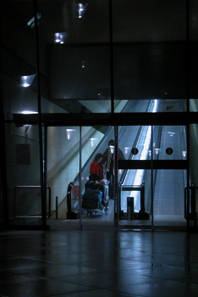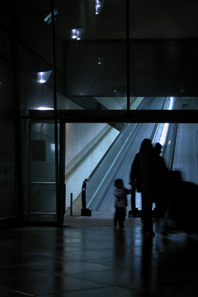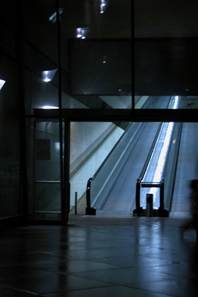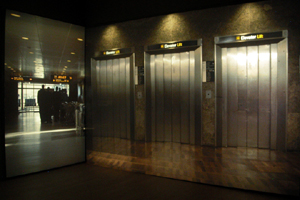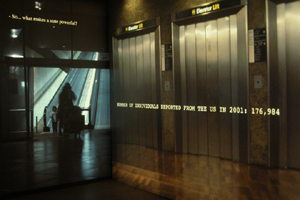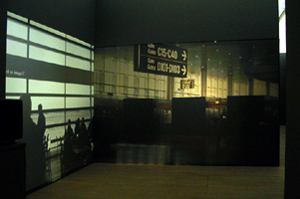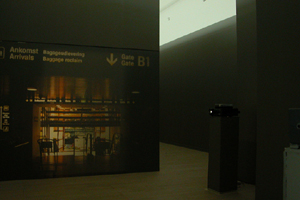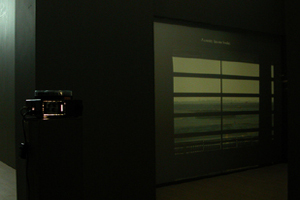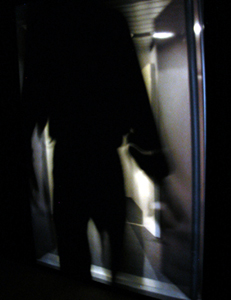| Katya Sander | e@katyasander.net |
| Meaning is what hides the instability of one's position with Andrea Geyer In Meaning Is What Hides The Instability of One's Position, Esbjerg Art Museum, Esbjerg, Denmark 2004 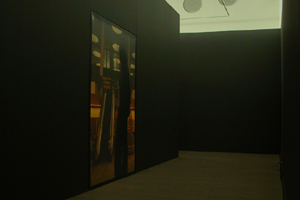 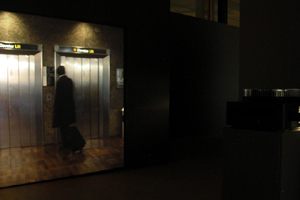 The architectural construction and the museum: The exhibition consists of one huge ‘double-labyrinth’ built up partly by thick, 3 meter high walls, and partly by frames covered with back-projection foil, onto which slide projections are cast from one side.  (For horizontal projections, the frames are 3 meters wide and 2 meters high; for vertical projections the screens are 2 meters high and 1.65 meter wide. All screens go all the way down to the floor, and where two screens meet, the images ‘touch’ each other.) The fact that the labyrinth is ‘double’ makes it is possible to enter the space from two ends, and walk around on one or the other side of the screens, but never to walk through the full space. The spectator is, in other words, caught by a dead-end, and has to walk out the same way she came in. Thus, while moving, watching the slide series projected and finding one's way, there is always the feeling of the ‘other side’: The part of the space one cannot access is constantly present, either through the map one tries to make in the mind while moving, or through the shadows of passing bodies that are cast from spectators on the other side, moving past the projectors, like oneself. Moving through, one is always reminded of the space and the bodies on the other side as well as the impossibility of passing through and vice-versa. 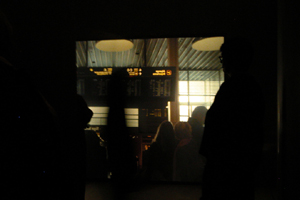 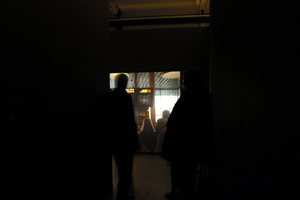 To get from one entrance of the labyrinth to the other, one has to walk through the permanent collection of the museum; a collection dominated by images (painting and photography), which are hung in a series of spaces that itself appears rather labyrinthine. 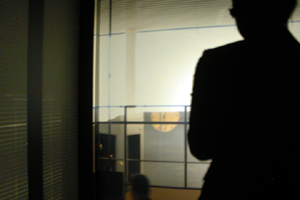 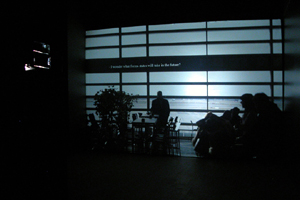 The slides:
In the spatial framing of the double labyrinth and the museum as such, the dialogues and the constantly slow-moving / slow-freezing slide sequences aim at touching upon ideas of mapping and projection, imagery and territory, space and access, as well as questions about how these elements and structures influence our collective imaginary horizon for the organisation of bodies and power. |
